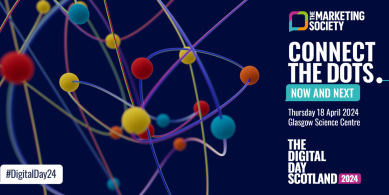The effect of smartphones on how we consume and share information, both with friends and with brands, is one of the biggest changes in human behaviour recently, perhaps since owning a car went mainstream.
But what will happen next? As people start to exert more control over their own screen time and change behaviour again, how can brands make sure the role they play is a relevant one?
We’ve undoubtedly hit peak smartphone. According to the latest Deloitte research, 85% of UK adults have one. Apple say that on average we unlock our phones 80 times a day – they’re becoming the primary way we communicate, find our way, buy things and interact.
The smarter they get, the more vital a role our phones play in our daily lives. And they’re set to get even smarter. Machine learning, facial recognition and other developments will further enhance how our phones enrich the way we do things.
But there’s a lot that’s not so smart too.
Selfie sticks. Endlessly scrolling. Sharenting. Checking Instagram the very minute we wake up and before we go to sleep. We’ve got sucked further and further into our phones.
Or as the Huffington Post said, “They record every moment of our lives, but they pull us from living in those moments.”
Now we’ve started to reach tipping point. We’re using the language of addiction as more and more want to control how much we use our phones. Digital detox is a thing.
There’s even a word for the fear we have of going without our phones – nomophobia.
I admit it, I am a nomophobic.
We recognise that things like social media, gaming and dating apps make us feel lonely, envious and anxious – yet we can’t stop ourselves. Constantly being aware of our phones has also taken away our ability to focus, some think the structures of our ACTUAL brains are changing as our attention spans shorten.
As brands, there are opportunities in understanding these changes and that people no longer want to spend so much time staring at their phones.
We can connect with consumers in ways that leave them feeling happy, informed or inspired; rather than drained, invaded or envious. Perhaps those negative feelings are why 800 million people have installed ad blockers, or why Havas found that people wouldn’t care if 74% of brands simply disappeared.
So, there’s a real opportunity in understanding which brands and which types of advertising or ideas people will actually want to engage with, rather than passively scroll through or actively scroll past.
Are the brands which entertain us, enhance our experience or benefit our day in some way those which will be most welcomed, or least ignored?
All of this means it’s a hugely exciting time for brands, one where ideas and experience have never been so important.
Gillian Wylie is Planning Director at Frame. Connect with them on Twitter.
Newsletter
Enjoy this? Get more.
Our monthly newsletter, The Edit, curates the very best of our latest content including articles, podcasts, video.
Become a member
Not a member yet?
Now it's time for you and your team to get involved. Get access to world-class events, exclusive publications, professional development, partner discounts and the chance to grow your network.




